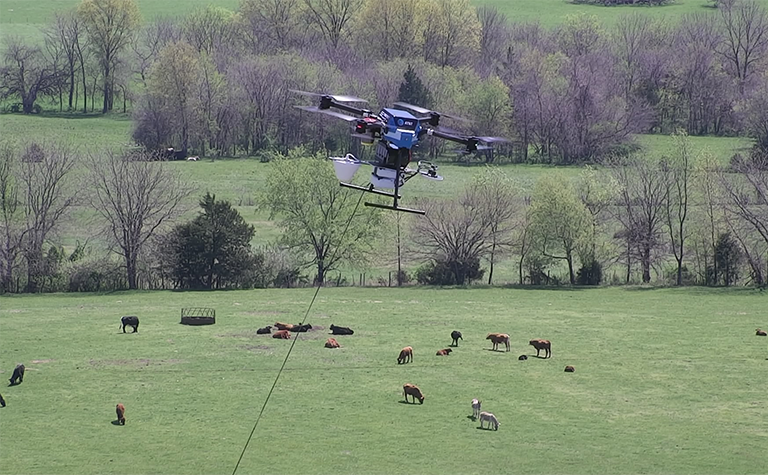AT&T Tests Delivering 5G Via Drones
In what AT&T is calling an industry first, the telco has successfully tested using a drone to deliver 5G signals in a rural area

DALLAS—AT&T has announced that they’ve successfully tested the delivery of a 5G signal in a remote rural area in Missouri.
The April 2022 test, which AT&T is billing as an industry first, could have important implications for first responders and emergency services workers, providing them with better communications in areas where mobile signals are not currently available.
The test used AT&T’s Flying COW (Cell on Wings) drone to provide the 5G signal.
“We had intermittent, weak LTE signal at the flight location before we launched the 5G Flying COW,” said Ethan Hunt, Unmanned Aircraft Systems (UAS) Principal Program Manager, AT&T. “We flew the drone up to about 300 feet, turned on the signal and it began transmitting strong 5G coverage to approximately 10 square miles.”
That means, customers with a capable 5G phone in the area could have gone from no service to super-fast wireless connections in seconds. In the future, this could help first responders in a search and rescue mission, the company said.
“Drones may use 5G for command and control or to stream video, but the AT&T 5G Flying COW is the only drone that provides a 5G network,” Ethan said.
A COW serves as a cell site on a drone. AT&T has been using this technology to beam LTE coverage to customers during big events and disasters for years and it believes that using the technology to supply 5G signals could be a game changer.
Get the TV Tech Newsletter
The professional video industry's #1 source for news, trends and product and tech information. Sign up below.
“Our focus within the drone world is connectivity. All of our drone solutions have that focus,” said Art Pregler, Unmanned Aircraft Systems (UAS) Program Director, AT&T. “5G brings a lot of new capability to the table. We can connect a lot larger number of devices with 5G. When we put that up, we can share with a larger population.”
That, in turn, can lead to a more seamless experience, better network performance and an overall better experience, AT&T said.
While AT&T emphasized the impact the test could have on first responders, the better communication features could also be useful for news organizations in rural areas when covering events where cell coverage is spotty.
“It’s enabling a lot more solutions, including human-to-machine interface that are now capable that wasn’t previously possible,” said Pregler.
“We are currently working through many exciting technical challenges to expand the capabilities of our Flying COWs,” added Pregler. “We’re working to autonomously fly without tethers for months without landing, using solar power to provide secure, reliable, and fast 5G connectivity to large numbers of users over wide geographic areas. This solution may one day help bring broadband connectivity to rural and other underserved communities across the U.S. and elsewhere.”
This launch is just one of several AT&T drone projects in the works right now, the company said.
These include Beyond Visual Line of Sight (BVLOS) flight operations and GEOCAST air operations. Currently AT&T’s Drone team is testing BVLOS – which would allow the pilot to operate a drone from a completely different location. It currently has an AT&T-patented flight control system that allows operators and tethered Flying COWs to be separated by thousands of miles.
AT&T also said it is working on a next phase to launch untethered Flying COWs from the operator’s location to fly many miles away to provide 5G connectivity at BVLOS locations.
George Winslow is the senior content producer for TV Tech. He has written about the television, media and technology industries for nearly 30 years for such publications as Broadcasting & Cable, Multichannel News and TV Tech. Over the years, he has edited a number of magazines, including Multichannel News International and World Screen, and moderated panels at such major industry events as NAB and MIP TV. He has published two books and dozens of encyclopedia articles on such subjects as the media, New York City history and economics.

